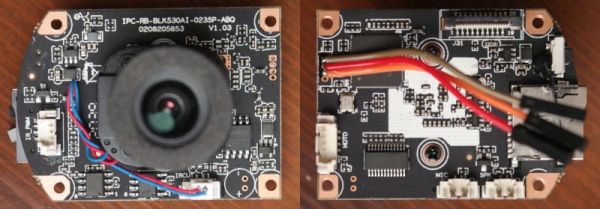With so many cheap network-connected devices out there being Linux-powered, it’s very tempting to try and hack into them, usually via a serial interface. This was the goal of [Andrzej Szombierski] when he purchased a cheap Chinese IP camera using an XM530 ARM-based SoC to explore and ultimately get root access on. This camera’s firmware provides the usual web interface on its network side, but it also has a UART on its PCB, courtesy of the unpopulated four-pin header.
Merely firing up a serial terminal application and connecting to this UART is not enough to get access, of course. The first obstacle that [Andrzej] struggled with was that U-Boot was configured to not output Linux kernel boot messages. After tackling that issue with some creative hacking, the next challenge was to figure out the root password, using a dump of the firmware image, which led to even more exploration of the firmware and the encoding used for the root password.
Even if some part of these challenges were possibly more accidental than on purpose by the manufacturer, it shows how these SoC-based Linux devices can put up quite a fight. This then leaves the next question, of what to do with such an IP camera after you have gained root access?















